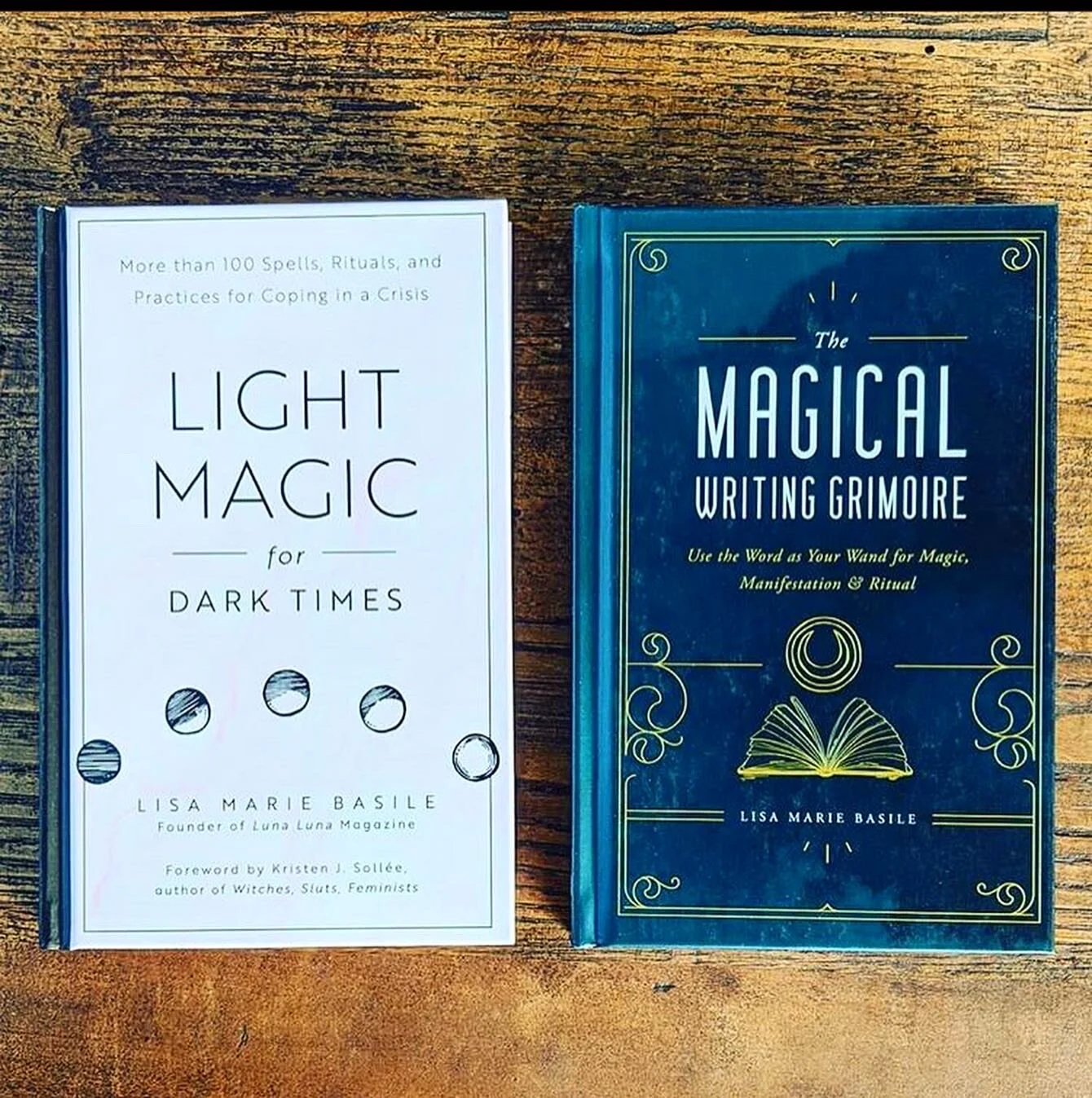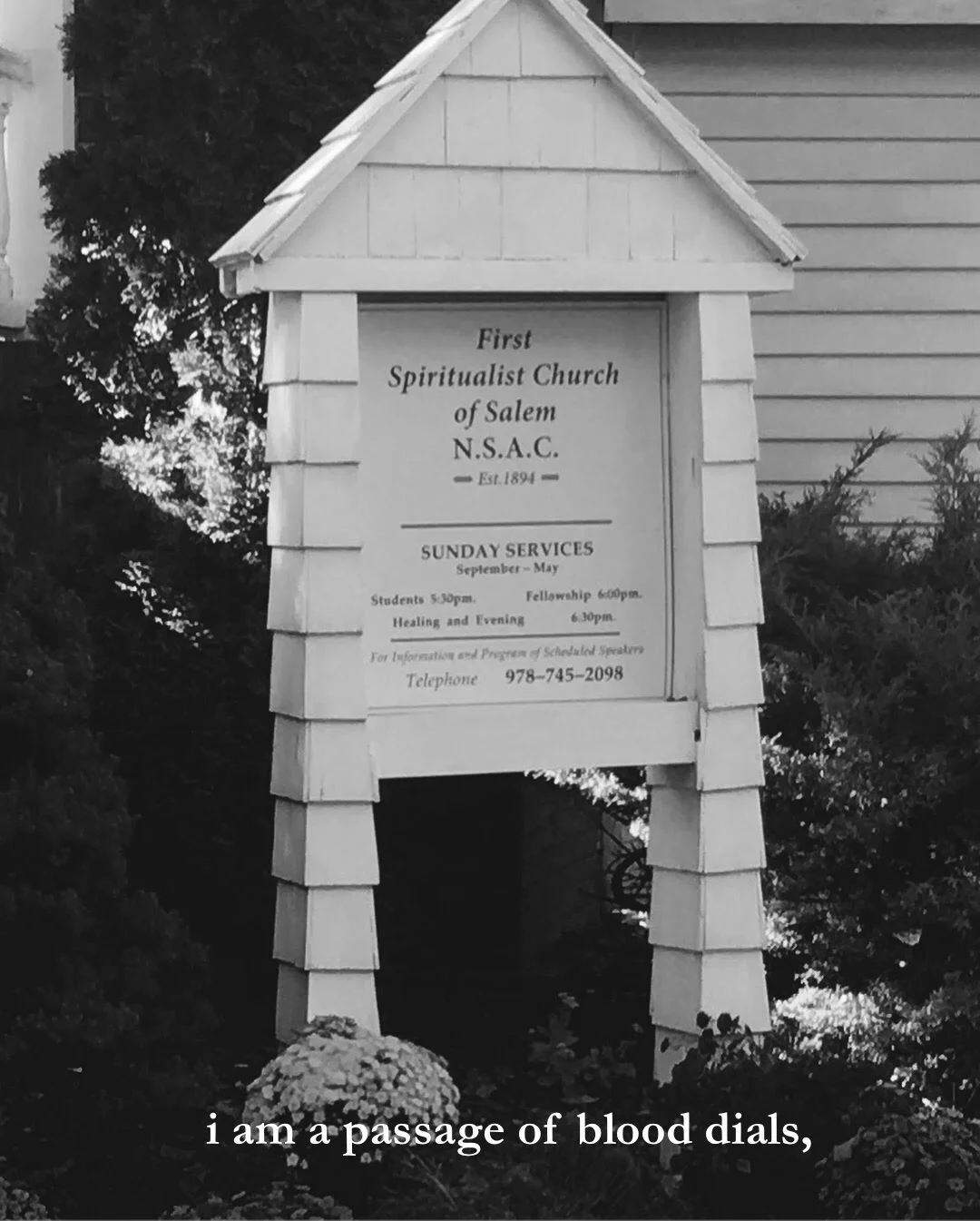BY MELISSA MADARA
For many witches the world over, Samhain is a particularly precious time in the wheel of the year. It takes place after sundown on October 31st, as a midway between the Autumn Equinox and Winter Solstice and the start of the dark half of the year. The name Samhain (pronounces SOW-in) comes from the Celtic pagan tradition, but the holiday goes by other names throughout the UK- Kalan Gwav in Cornwall, Ysbrydnos or Nos Galan Haf in Wales, Hop-tu-Naa on the Isle of Man, and of course Halloween through much of the English speaking world.
For many, this day is regarded as a liminal time when the veil or barrier between the seen and the unseen world is at its thinnest, and communication or travel between the two realms is most possible. Samhain hinges between two celestial polarities- light and dark, warmth and cold, life and death- and in this way, acts as a portal to spiritual worlds, bringing communication, initiation, travel, and contact.
The spirits who manifest themselves in this place could be family members, ancient ghosts, or even a host of fairies and supernatural creatres referred to in Irish mythology as the Aos Si. To keep these spirits at bay, great bonfires are lit as a cleansing and protective measure, and offerings of food and drink are left out to appease the spirits in hopes that they will act as protectors during the cold winter ahead. Pumpkins, or more traditionally turnips, are carved into toothy grins, filled with candles, and carried or placed at the door as talismanic objects to protect its owner from these spirits. Celebrants wear costumes and masks to blend in with the wandering spirits, so they may safely travel the night among them.
For witches, this time is particularly useful for engaging in spirit work, ancestor veneration, exalting the earth, or connecting with the Otherworld. Even if you don’t come from the Celtic or Pagan traditions, the magic of this time is open to you, because its mysteries are primal. Liminal spaces have been regarded as portals to other realms across history and the globe, and are a common theme through many traditions that seek to walk between these realms.
Below are a few brief and inter-traditional rituals for accessing different aspects of the Samhain season. They should be accessible to new witches but also engaging for experienced practitioners, and provide access to just a few of the spiritual treasures that this festival has to offer. I encourage you to enter them with a pure heart and a willingness to explore, as both are required to breech these other worlds, and the spiritual, uncanny landscapes beyond.
GET TO KNOW THE SPIRITS AROUND YOU
Many magical traditions honor the concept of genius loci, or “spirits of place.” Depending upon your tradition, these can be the spirits of your home, the land it sits on, the trees and plants around it, or the litany of spirits that have inhabited and walked this space before you. The benefits of fostering relationships with these types of spirits can range from home protection to gaining knowledge of the spiritual landscape in which you reside, but it’s also always a good idea to be a good neighbor.
To initiate contact with these spirits, prepare a suitable offering. This could be a feast of natural, earth-based foods (apples, spirits, fresh bread), a beautiful altar decked with objects from your home or neighborhood, beeswax candles, or something simple like sweet smelling incense. Set this in a prepared space and turn out all of the lights in your home.
Prepare an strong herbal bath. I tend to use cedar boughs and birch bark when I work with spirits of place, but you may find it more useful to prepare a brew of local plants, stones, and sacred herbs. Strain this brew and either add it to your bath, or add it to temperate water in a large pot and pour it over your head, baptism-style. This water should be patted off gently and not dried thoroughly, and bathing should always occur by candlelight. If you would like to dress afterward, have clean, comfortable clothes prepared.
On leaving your bath, approach your altar space and light any candles or incense. Sit back and allow the darkness of the room to cloak and envelop you. Speak your name into this place, and your intentions for fostering these relationships. Let these spirits know they are welcome, and how they can best make themselves manifest to you. Ask them if there are offerings they like, or methods of contact that are most effective. Ask them how you can be of service to them, and how they can be of service to you. Talk all night if you like, or simple share communal space with one another.
When it is time to leave, I like to break bread. I take a piece of bread or fruit and break it in half, eating half and leaving the other on the altar. I leave the candles and incense burning all night, and in the morning, I carry leftover offerings and wax to a crossroads, riverbank, or the edge of the forest (being careful not to leave inorganic materials in nature).
HONOR YOUR BELOVED DEAD
Ancestor magic has powerful benefits for the practitioner, being that blood is shared between the spirits and oneself. When we talk about ancestor spirits, we don’t just mean the ones you can name. The term refers to millennia of births and deaths that lead to your existence. This can also refer to non-blood ancestors, such as the lineage of witches in your tradition. Initiating contact with these spirits should be easy because of lineage, but also may be difficult in the event of ancestral trauma. These spirits usually have a lot to say, and it is best to listen closely and with reverence.
My ancestor altar is a permanent installation in my home, and is made up of several parts. I have many old film photographs of my family, dating back three generations. My preferred offering to familial spirits is a glass of water, a piece of chocolate, and small dish containing honey and olive oil, but these will vary family to family. If you’re unsure of what to offer, a glass of water and a white candle never really go wrong.
I also encourage you to build a physical place for these spirits to reside. This could be a clay jar, a ceramic skull, a wooden box, or a wax poppet, but the role is to create a vessel for spirit to be housed and live in your space. These vessel can be filled with your personal concerns (hair or blood are nice choices), red thread, necromantic herbs (marshmallow root is my fave), white eggshell, soil from graveyards (particular where family is inferred), frankincense, and other non-perishables that seem appropriate. You may interact with this object as a physical extension of your ancestral spirits, and feed it when appropriate.
You may also find it useful, especially if there is strong ancestral trauma in your lineage, to employ the assistance of a psychopomp, or a spirit that can cross between worlds. Common choices are Hermès or Hecate from the Greco Roman pantheons, but family spirits that you have strong connections to are also good choices. I often use my childhood dog for this purpose.
You may choose to veil this altar when it is not in use, as it can be intensely personal. Black or white are good color choices, and any natural fabric will do. I use white vintage lace.
In my experience, these relationships (like most family) gain their richness over time and repeated interaction. Offer them a portion of your dinner each night. Share the joys and the sorrows of your life with them. Ask for advice and favors, but be sure to return the favors when given. Work to investigate and heal ancestral trauma where it is present. Seek out the other witches in your family line. Map your family tree. Stay engaged in the work of maintaining both your living and dead family, and the rewards of support will amaze you.
PREPARE FOR THE WINTER AHEAD
As witches, we can understand the turning of seasons on both a physical and archetypal level. As the earth wanes into darkness, we can similarly engage in a spiritual introspection- turning our focus inward, and weighing what works and what doesn’t in our lives. It is a time when the choices that do not serve us truly show their faces, and where we can more easily access the wild & intuitive nature of our spiritual selves to seek out better pathways.
The Samhain season is an excellent time to begin this sort of work in preparation for both the literal and symbolic winters ahead. Deepening our relationship with our intuitive nature and confronting our devilish, harmful “shadow” selves are parts of the great work of witchcraft, so anytime is a good time to start, but the liminal space provided by Samhain gives us a unique perspective. Just as darkness and light can simultaneously inhabit the container of Samhain without judgement, so too can we hold space for both of these aspects of our selves, and examine them without fear or shame. It is the nature of liminal spaces like these to hold space for opposites, not to force moral values on them, and harnessing this potential is incredibly useful.
A skill that I’ve found helpful in discerning between the needs of the intuitive, soulful self and the wants of the shadow self is turning the spiritual ear to the voice of both parts. There is a quote by a medieval Christian monk who said that at night, angels and devils would appear to him, but sometimes the devils would appear as angels and the angels would appear as devils. When asked how he tells them apart, he said you can only tell by how you feel when they’ve left you. The same is true for these two parts of the self. The voice of the intuitive nature is soulful and deep. It is how we feel when we are moved by artwork, or when we feel our sense of place in the world, or when we appreciate nature, or when we engage in work aligned with our soul’s purpose. The voice of the shadow self is driven by fear and anxiety, and seeks revenge, dominance, isolation, and judgement of others. When the soulful voice speaks, we are called into action, we are moved to passion, and we fall in love. When the shadow self speaks, we worry, we tremble, and we lose sleep.
A ritual I’ve found for engaging these two selves is one I learned while I was living in India. In a modified version of this ritual, the practitioner should sit in as much darkness as can be gathered, particularly in a place that inspires a little bit of fear. Basements or closets work well for this. The practitioner should enter a meditative state, and call into this place all the things they fear most- people who have wronged them, deepest fears about themselves, traumas, demons, wrathful gods, serpents, spiders, lions, tigers, and bears. They should focus on calling these creatures into their space, and inviting them to feast on the practitioners spirit and body. The practitioner should focus on visualizing this feast in detail, and hold space for the feelings that arise. Cry, scream, and agonize through the experience.
In my experience, there comes a breakthrough point at the crescendo of fear when a new voice emerges. A soulful and light voice, that cuts through the chaos of the others. It understands the soulful self as independent from these ego-driven terrors, and banishes them. It is self assured and possesses the capacity to offer the deepest healing. Crying may turn to laughter. The participant should stay in this place as long as they would like, until they feel ready to leave.
It is nice to have prepared a drink and small snack after ritual to help the participant return to their bodies. Journaling, drawing, or automatic writing can help process the experience, but the important takeaway should be the discernment between the two voices that both inhabit the self. You will always know them by how you feel when they leave you.































